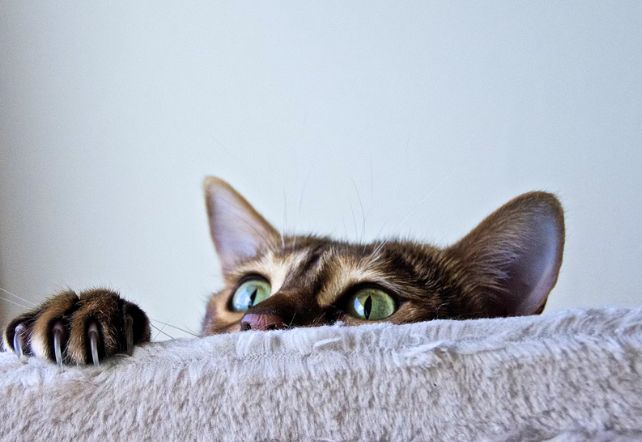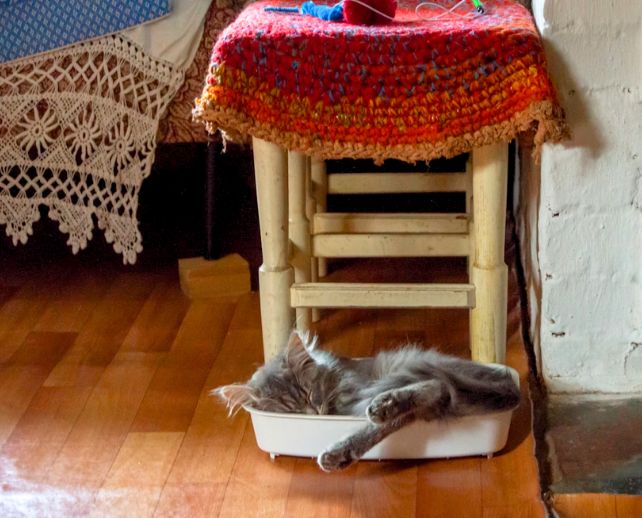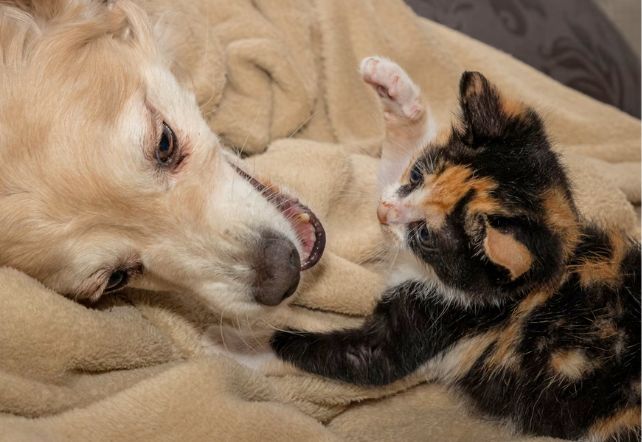Around one third of Australian households live with at least one cat, yet surveys tell us the cats’ needs are not being met. Cats may rule the internet, but humans often misconstrue feline behavior.
Earlier this year, the Washington Post boldly declared cat’s aren’t jerks – they’re just misunderstood. This was prompted by research showing that, contrary to unhelpful stereotypes, cats are not antisocial. They can and do bond closely with humans.
The more we learn about cats, the more we realize they are complex individuals with unique personalities and preferences, capable of learning.
From understanding your cat’s language to keeping them safe and healthy – here are science-backed tips to improve the lives of your feline flatmates.
1. Pay attention to body language
Cats communicate with humans using body language and vocalization. However, while cats direct meows at humans, and the meows vary depending on the context, humans are not great at decoding them. But we can read cat body language.
For example, slow blinking is likely to indicate a positive emotional state. Cats who are not happy (for example, don’t want to be touched) will freeze, move away, flatten their ears, hiss, or – if they feel they have no other option – scratch or bite.
It is better to allow cats to approach you on their terms, rather than pushing for social interaction. A cat approaching you with their tail up is giving a friendly signal, while a tail swishing from side to side signals annoyance.
Cats should always have the option to opt out of any interaction, like being touched. If you aren’t sure, just “ask”: stop patting them. If they walk away, they’re not keen. If they rub their head against you, they want to continue the interaction.

2. Provide a healthy environment
The American Association of Feline Practitioners and the International Society of Feline Medicine have agreed upon five pillars of a healthy feline environment:
- A safe space so that cats can retreat if frightened.
- Multiple, separated key resources (food, water, toileting areas, scratching areas, play areas and resting or sleeping areas) so that cats can comfortably conduct their daily activities.
- Opportunity for play and predatory behaviour, such as games with wand toys that simulate hunting.
- Positive, consistent and predictable human-cat interactions, respecting a cat’s choice about whether and how they interact.
- Respecting the importance of a cat’s senses by avoiding undesirable stimuli (strong smells and loud noises), and providing desirable sensory stimulation (for example, use of catnip or silver vine).
These pillars provide a useful checklist. If you read this and realize your cat’s food and water are right next to the litter tray, you can improve your cat’s environment (and their experiences of eating and toileting) by separating these resources right now.

3. Clean the litter tray!
A litter tray may represent an unpleasant chore to you, but the importance of a spacious litter tray to your cat cannot be overstated. Cats prefer using a clean litter tray, even if they are the only cat in the household.
Cats like to spend time in the tray before, during and after toileting, and they generally prefer a large tray.
Poor litter hygiene is associated with a risk of urinary problems, which can be life-threatening.
A survey of over 12,000 Australian cat owners found that urinary problems were more common in households with a low number of litter trays per cat, less frequent removal of feces from the trays, and the use of crystal-type cat litter.
If you switch the type of litter you provide, a slow transition is recommended to allow cats to get used to the change.

4. Read the room
Do you have more than one cat? Tension between household cats is common but often overlooked, as it’s not always physical fighting.
Signs of inter-cat tension can include prolonged staring, or even blocking the use of resources such as the litter tray or cat door, to prevent other cats from using them.
In their 2024 intercat-tension guidelines, the American Association of Feline Practitioners note this can case chronic fear, anxiety and stress-related illnesses in cats.
Learning to recognize and manage tension between household cats can improve the welfare of all parties.
When you love your cat, it is tempting to seek to amplify the joy by adopting another. But many cats prefer to be the only cat in the household, and don’t cope well with a feline flatmate.
If they have positive interactions with familiar, trusted humans, they’re unlikely to be lonely.

5. Keep cats and other animals safe
Historically, domesticated cats earned their keep protecting grain stores from rodents. But what constitutes responsible cat ownership has changed.
Around 65 percent of Australia’s cat owners confine their cats indoors always, while 24 percent keep their cats confined at night.
A major driver for indoor-only housing of cats is their predation of wildlife. Another is concerns about roaming-associated risks to cats, including cat fights, infectious diseases (such as feline immunodeficiency virus or FIV), misadventure and motor vehicle trauma. But owners of cats kept entirely indoors were more likely to report “problem” behaviors.
Ideally, cats shouldn’t be allowed to free-roam unsupervised where they can harm wildlife, even within the bounds of the property where you live. More than a third of local councils in Australia now require cats to be contained overnight or 24 hours a day.
Outdoor access provides sensory stimulation, with different sights, sounds and smells. Alternatives to free roaming include providing access to a well-designed cat run, harness-training your cat, or supervising your cat.
Cats who don’t leave home unless they’re moving house or being taken to the vet, quickly learn to associate the cat carrier with a trip to an unfamiliar environment. It doesn’t take a genius to work out that a vet visit is imminent when the carrier comes out.
But that negative association can be changed. Cats who were rewarded with treats when they approached, stepped inside or rested in the carrier for six weeks were much less stressed during veterinary visits.
Cats are intelligent, and contrary to popular opinion, can be trained. The process can be enriching for cats and humans alike. With patience and commitment, you can train your cat – from a simple “sit” to voluntarily stepping into the cat carrier.
In short, give cats choice, respect their “cat-ness”, pay attention to their needs and try to see our world from their point of view. Your cat will be happier for it.![]()
Anne Quain, Senior Lecturer, Sydney School of Veterinary Science, University of Sydney
This article is republished from The Conversation under a Creative Commons license. Read the original article.








Leave a Comment